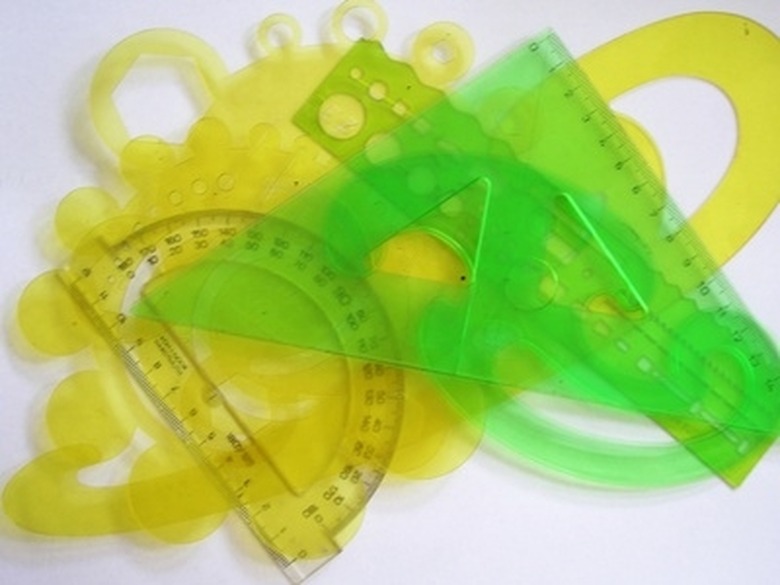How To Learn To Read A Ruler
People measure things every day, using gallons, miles, minutes and inches. Rulers come in different versions, but all of them have the same purpose. Some rulers are used only by specific people, such as architects, engineers and physicists. Some have multiple scales, but all are marked in a standardized way so that anyone familiar with the system of measurement can use them easily. Sit down with a few rulers and discover how they help measure the world.
Step 1
Look at the ruler to determine its measuring scale. The rulers on school-supply lists are marked in inches and come in 12-inch lengths. Printers use 18- or 24-inch rulers, the traditional width of printing galleys, with measurements in inches and points. A 36-inch ruler is called a yard stick because it is 3 feet long. An architect's ruler has three sides with different scales on each side. Once you know what measuring system your ruler uses, you can begin to read it.
Step 2
Take a plain old school ruler and look at it. It should be divided into 12 segments, numbered one through 12. Each number will be next to a long line and there will be a group of lines between numbers. The second-longest line divides the inch into half-inches and each succeeding length into quarters, eighths and sixteenths of an inch. Note that there are eight sixteenths in a half-inch, four sixteenths in a quarter and two sixteenths in an eighth of an inch.
Step 3
Read your ruler by noting the inch, then adding the number of parts of the inch at the longest line you can find (say three-quarters), then the next longest and so on. If, say, you end up with three-quarters plus one-eighth plus one-sixteenth, you'll have to make your measurement in sixteenths and take 12/16 plus 2/16 plus 1/16 to get 15/16 of an inch. Your total measurement would be 1 15/16 inches.
Step 4
Read a metric ruler by first noting whether the measurement is in centimeters (cm) or millimeters (mm). A centimeter is equivalent to 0.39 inches. Most metric rulers are numbered in centimeters and marked to millimeters, 10 mm to each cm. Because the metric system is based on the metric system, reading a metric ruler simply consists of noting the number, say two centimeters and counting the millimeters. The fifth millimeter is generally marked with a longer line than the others to give a reference point. If you read a three on the ruler above, then counted six millimeters toward the 4 cm mark, you would have 3.6 cm or 36 mm.
Step 5
Look at other variations. Other types of rulers use units of measurement that designers, scientists or trades people need to do their jobs. The architect's ruler above has three sides with 12 different "scales"–a rule with distances marked in different lengths to make accurate drawings of objects too large to draw life-sized. With a little practice, these rulers can be used for things such as designing a tree house or doing school projects.
TL;DR (Too Long; Didn't Read)
Most measurements you make will be less exact and will use halves and quarters of sixteenths of an inch, but if you're building a cabinet or measuring mechanical parts, you'll need those sixteenths.
Cite This Article
MLA
Reynolds, Laura. "How To Learn To Read A Ruler" sciencing.com, https://www.sciencing.com/learn-read-ruler-4471573/. 24 April 2017.
APA
Reynolds, Laura. (2017, April 24). How To Learn To Read A Ruler. sciencing.com. Retrieved from https://www.sciencing.com/learn-read-ruler-4471573/
Chicago
Reynolds, Laura. How To Learn To Read A Ruler last modified March 24, 2022. https://www.sciencing.com/learn-read-ruler-4471573/
